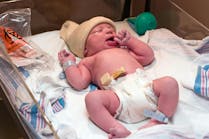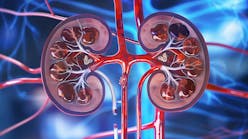Zika Virus
NIH begins testing investigational Zika vaccine in humans. The National Institute of Allergy and Infectious Diseases (NIAID), part of the National Institutes of Health (NIH), has launched a clinical trial of a vaccine candidate intended to prevent Zika virus infection.
The early-stage study will evaluate the experimental vaccine’s safety and ability to generate an immune system response in participants. At least 80 healthy volunteers, ages 18 to 35, are expected to participate in the trial at three study sites in the United States, including the NIH Clinical Center in Bethesda, MD. Scientists at NIAID’s Vaccine Research Center (VRC) developed the investigational vaccine, called the NIAID Zika virus investigational DNA vaccine, earlier this year.
The investigational Zika vaccine includes a small, circular piece of DNA, called a plasmid, which scientists engineered to contain genes that code for proteins of the Zika virus. When the vaccine is injected into the arm muscle, cells read the genes and make Zika virus proteins, which self-assemble into virus-like particles. The body mounts an immune response to these particles, including neutralizing antibodies and T cells. DNA vaccines do not contain infectious material—so they cannot cause a vaccinated individual to become infected with Zika—and have been shown to be safe in previous clinical trials for other diseases.
In the Phase 1 clinical trial, called VRC 319, volunteers will be divided randomly into four study groups of 20 people each. After enrollment, all participants will receive a vaccination at their first visit via a needle-free injector that pushes the vaccine fluid into the arm muscle. Half of the participants will receive one additional vaccination eight weeks or 12 weeks later. The remaining participants will receive two additional vaccinations: one group of 20 participants will receive a second vaccine at week four and a third at week eight; the other group of 20 participants will receive a second vaccine at week four and a third at week 20. All participants will receive the same dose at each vaccination.
Initial safety and immunogenicity data from the Phase 1 trial are expected by January 2017. If results show a favorable safety profile and immune response, NIAID plans to initiate a Phase 2 trial in Zika-endemic countries in early 2017.
The FDA has issued the following Emergency Use Authorizations for the qualitative detection of RNA from Zika virus in human serum, plasma, and urine (collected alongside a patient-matched serum or plasma specimen):
- Luminex Corporation’s xMAP MultiFLEX Zika RNA Assay
- Siemens Healthcare Diagnostics Inc.’s VERSANT Zika RNA 1.0 Assay (kPCR) Kit
- Viracor-IBT Laboratories, Inc.’s (“Viracor-IBT”) Zika Virus Real-time RT-PCR test
As well as:
- Hologic, Inc.’s Aptima Zika Virus assay for the qualitative detection of RNA from Zika virus in human serum and plasma specimen
- altona Diagnostics RealStar Zika Virus RT-PCR Kit for the qualitative detection of RNA from Zika virus in serum or urine (collected alongside a patient-matched serum specimen)
- Focus Diagnostics, Inc.’s, Zika Virus RNA Qualitative Real-Time RT-PCR test for the qualitative detection of RNA from Zika virus in human serum specimens
- CDC’s Zika Immunoglobulin M (IgM) Antibody Capture Enzyme-Linked Immunosorbent Assay (Zika MAC-ELISA) for the presumptive detection of Zika virus-specific IgM in human sera or cerebrospinal fluid (CSF) that is submitted alongside a patient-matched serum specimen
- CDCs Enterovirus D68 2014 Real-time RT-PCR Assay (EV-D68 2014 rRT-PCR) for the in vitro qualitative detection of RNA from the Enterovirus D68 (EV-D68) strains detected in North America in 2014 in upper respiratory specimens (such as nasopharyngeal [NP] swabs, oropharyngeal [OP] swabs, dual NP/OP swabs, and/or nasal washes) and sera in conjunction with patient-matched upper respiratory specimen(s) from individuals with signs and symptoms of EV-D68 infection and/or epidemiologic risk factors, by qualified laboratories designated by CDC on specified instruments.
OSHA, NIOSH guidance: Protecting healthcare workers from Zika virus. Employers and workers in healthcare settings and laboratories should follow good infection control and biosafety practices (including universal precautions) as appropriate, to prevent or minimize the risk of transmission of infectious agents (e.g., Zika virus). Always follow universal precautions for potential BBP exposures, as described in OSHA’s BBP standard (29 CFR 1910.1030).
In healthcare, standard precautions can be used to expand the universal precautions required by the BBP standard by adding several protections (including expanded PPE) not covered by the BBP standard. Standard precautions include, but are not limited to, hand hygiene and the use of PPE to avoid direct contact with blood and other potentially infectious materials, including laboratory specimens/samples. PPE may include gloves, gowns, masks, and eye protection.
Hand hygiene consists of washing with soap and water or using alcohol-based hand rubs containing at least 60 percent alcohol. Soap and water are best for hands that are visibly soiled. Perform hand hygiene before and after any contact with a patient, after any contact with potentially infectious material, and before putting on and upon removing PPE, including gloves.
Laboratories should ensure that their facilities and practices meet the appropriate Biosafety Level (BSL) for the type of work being conducted (including the specific biological agents—in this case, Zika virus) in the laboratory. CDC has specific Biosafety Guidance for the Transportation of Specimens and for Work with Zika virus in the laboratory.
- Follow workplace standard operating procedures (e.g., workplace exposure control plans) and use the engineering controls and work practices available in the workplace to prevent exposure to blood or other potentially infectious materials.
- Do NOT bend, recap, or remove contaminated needles or other contaminated sharps. Properly dispose of these items in closable, puncture-resistant, leakproof, and labeled or color-coded containers.
- Use sharps with engineered sharps injury protection (SESIP) to avoid sharps-related injuries.
- Report all needlesticks, lacerations, and other exposure incidents to supervisors as soon as possible.
Employers should consider enhanced precautions in situations where workers are at increased risk of exposure to Zika virus or other hazards. CDC recommends healthcare workers use standard precautions during patient care regardless of suspected or confirmed Zika infection status. While there is no evidence of Zika transmission through aerosol exposure, minimizing the aerosolization of blood or body fluids as much as possible during patient care or laboratory tasks may help prevent workers from being exposed to other pathogens. Additional protections, including engineering controls to ensure containment of pathogens or enhanced PPE to prevent or reduce exposure, may be necessary during any aerosol generating procedures or other such tasks.(www.cdc.gov/niosh/topics/outdoor/mosquito-borne/pdfs/osha-niosh_fs-3855_zika_virus_04-2016.pdf)
Alzheimer’s Disease
Biochip-based blood test detects elevated risk for AD. Researchers have unveiled results from a new blood test to help identify which patients are at an elevated risk of Alzheimer’s disease (AD). The findings showed that the biochip test, which allows multiple tests to be run on one blood sample, was as accurate as existing molecular tests that analyze DNA. This test detects the presence of a protein in the blood produced by a specific variation of the apolipoprotein gene (ApoE4), which is associated with increased risk of developing AD.
The ApoE4 is inherited from each parent. When a patient inherits the ApoE4 variant from one parent, he or she has a three times greater risk of developing AD. A patient who inherits ApoE4 from both parents is eight to 12 times more likely to develop the disease.
To verify the accuracy of the biochip test, 384 samples were analyzed, and results were compared to those from a standard molecular diagnostic test. Researchers from Randox Laboratories collaborated with research colleagues at the Medical University of Vienna and found that results from the two tests were in 100 percent agreement.
As biochip tests allow clinicians and researchers to quickly run multiple tests on one sample of blood, this new test is also faster and more affordable than the standard DNA test, producing results in only three hours.
Industry News
Medicare Advisory Panel votes in favor of NILA’s reconsideration requests for toxicology codes. The Annual Laboratory Public Meeting and PAMA Advisory Panel on Clinical Diagnostic Laboratory Tests (CDLTs) began on July 18, 2016, at the Centers for Medicare and Medicaid Services (CMS) in Baltimore. At issue were several new laboratory codes for 2017 and reconsideration of definitive drugs of abuse test codes G0480-G0483.
Reconsideration was accepted by CMS following the submission of formal requests from the National Independent Laboratory Association (NILA) and NILA member Aegis Laboratories and a direct follow up request by NILA to ensure the agency reconsidered all definitive drug test codes. CMS initially denied inclusion of G0480 under reconsideration, but changed its decision after NILA’s appeal.
Laboratory stakeholders were provided the opportunity to register to present at the meeting to CMS and to the Protecting Access to Medicare Act (PAMA) panel members.
Lance Benedict, president and CEO of Industry Lab Diagnostic Partners, LLC, presented on behalf of NILA with recommendations for adjusting the pricing of definitive drug test codes. He asserted that the current rates set by CMS for definitive drug testing by drug class do not cover the cost of the many tests performed under the current drug classes. He argued that it is inappropriate to set rates at such low levels prior to PAMA implementation and with no consideration of the impact such pricing has on the small and midsize laboratory market and on access to needed testing services. Several other presenters supported the recommendations that were offered by NILA.
Following stakeholder presentations, PAMA panel members deliberated on all of the recommendations provided, including reconsideration of definitive drug test payment rates.
New Assay
Mayo Clinic launches blood test that assesses heart attack risk using plasma ceramides. Mayo Clinic has launched a new type of blood test that will be used to predict adverse cardiovascular events in patients with progressing coronary artery disease. The test measures blood concentrations of plasma ceramides, a class of lipids that are highly linked to cardiovascular disease processes.
The new test will help clinicians identify at-risk individuals and is available to Mayo Clinic patients and to healthcare providers worldwide through Mayo Medical Laboratories (MML). MML is the reference laboratory of Mayo Clinic, offering advanced laboratory testing and pathology services to more than 5,000 healthcare organizations in more than 60 countries. MML collaborated with Zora Biosciences Oy, a diagnostics discovery company out of Finland that specializes in cardiovascular disease, on the test.
The test also might be used to determine if treatment is necessary in individuals at intermediate risk via the risk calculator from the American College of Cardiology and the American Heart Association.
New Studies
Blood test could help prevent organ transplant rejection. Researchers presented findings at the recent AACC annual meeting that DNA found circulating in the bloodstream—known as cell-free DNA—can be used to identify liver transplant patients with acute rejection with greater accuracy than conventional liver function tests. This cell-free DNA test could help liver transplant patients receive crucial treatment for rejection faster, and it has the potential to improve the prognosis of kidney and heart transplant patients as well.
Episodes of acute rejection—rejection that takes place in the first few months after an organ transplant—are relatively common. In liver transplant patients in particular, acute rejection develops in about 20 percent of those treated with standard immunosuppressive therapy. Monitoring for the onset of rejection so that healthcare providers can swiftly counteract it is therefore critical for the long-term survival of organ transplant recipients. However, the standard for identifying rejection is biopsy, which is expensive and invasive, and at present there are no effective blood tests to take its place.
Overall, researchers determined that by testing for graft-derived cell-free DNA levels >10 percent, they were able to identify more than 90 percent of liver transplant patients with acute rejection—which is a substantially higher percentage than what conventional liver function tests can identify. They also believe that this test could detect heart and kidney transplant rejection, and are conducting additional studies to confirm this.
Researchers make new discovery in genetic disposition to ALS. Researchers from an international consortium headed by the University Medical Center (UMC) Utrecht have discovered two new amyotrophic lateral sclerosis (ALS) genes. Both have the potential to increase the risk of ALS significantly. This means that thus far six risk areas in hereditary material (DNA) have been identified for ALS.
One of the two new ALS genes was found by the UMC Utrecht in association with King’s College London (UK). Researchers analyzed the genetic material of more than 15,000 ALS patients and compared it with that of 25,000 healthy subjects.
The other new gene was discovered in a study by UMC Utrecht in collaboration with the University of Massachusetts Medical School, Worcester. This second study focused specifically on ALS patients with a family history of the disease.
In 2013, entrepreneurs and ALS patients Bernard Muller and Robbert Jan Stuit and Stichting ALS Nederland launched the global Project MineE in conjunction with the UMC Utrecht Brain Center. Project MinE aims to analyze the DNA of at least 15,000 ALS patients and 7,500 control subjects. Researchers intend to store the DNA in a database for analysis, and the 22,500 DNA profiles will be compared. In this way, they seek to discover the genetic basis of ALS and ultimately develop an effective treatment.





